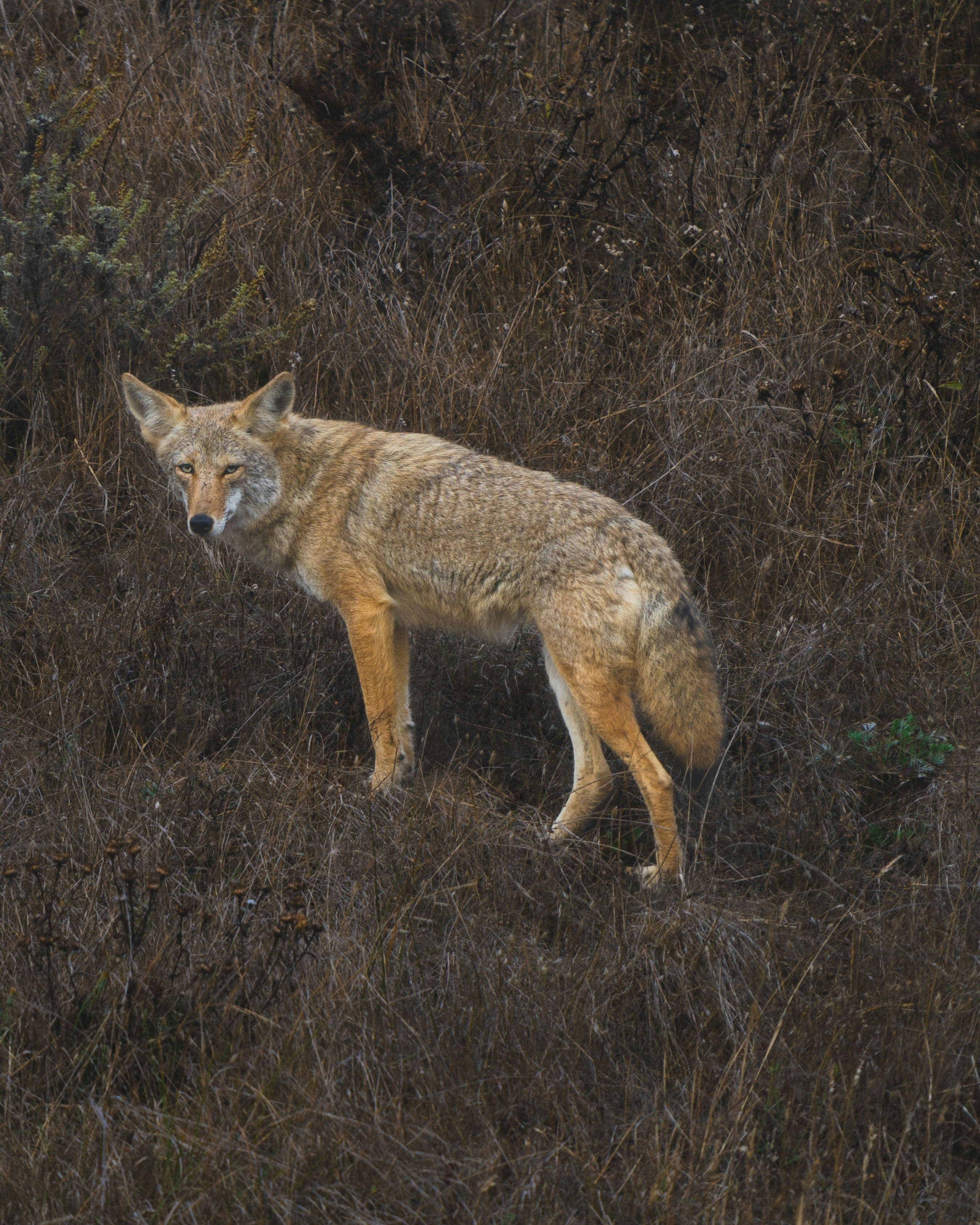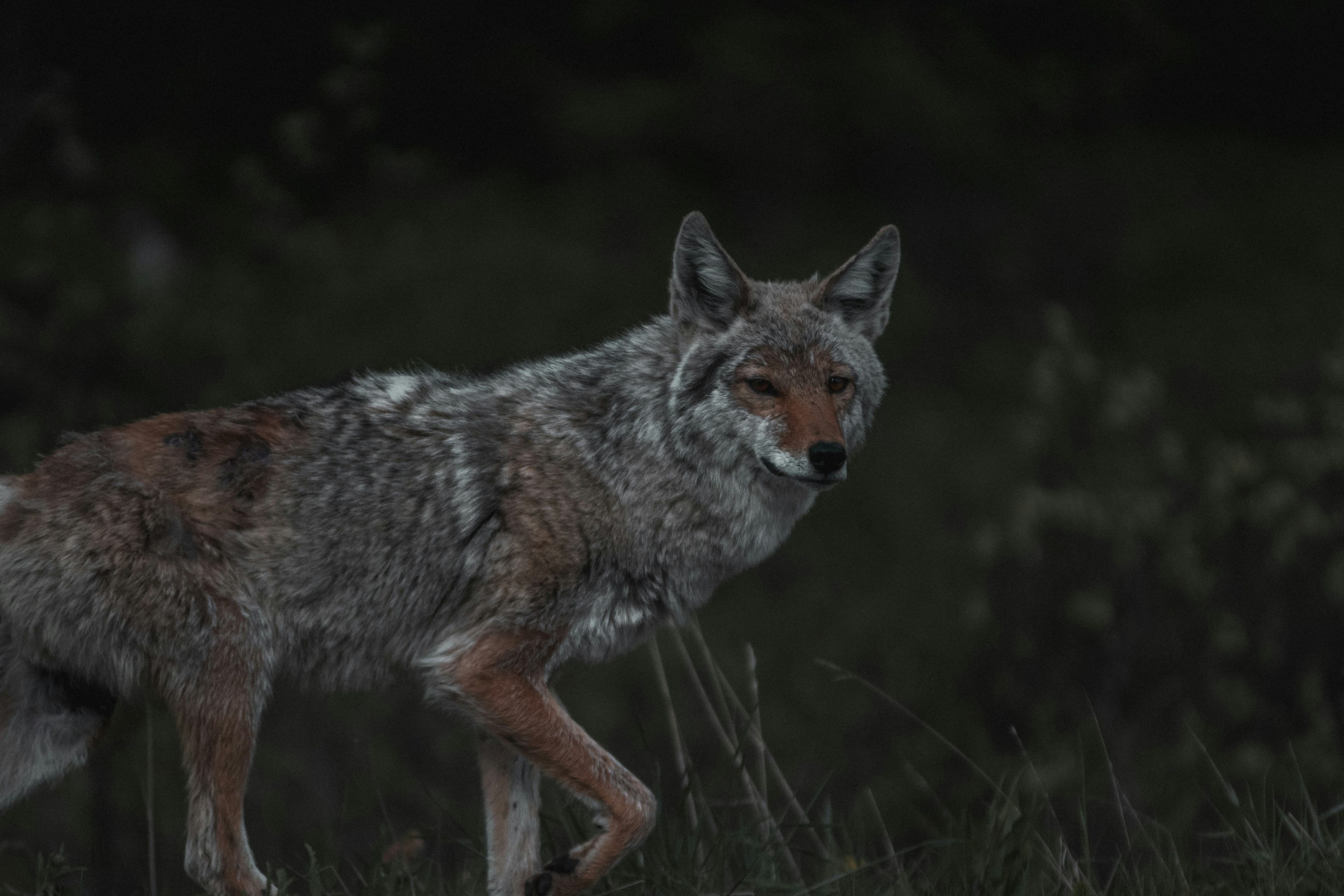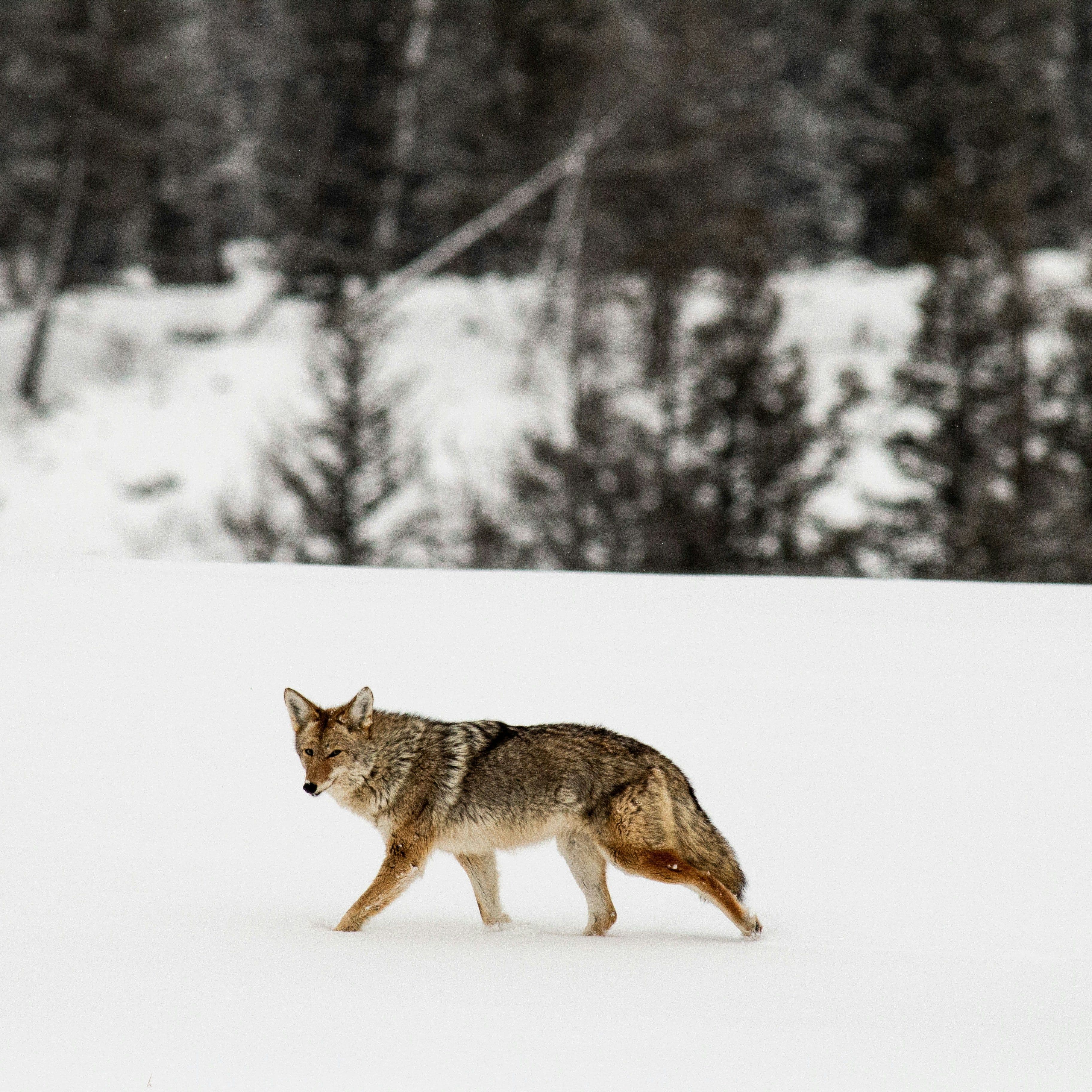Coyote Hunting Essentials: Gear, Tactics, and Advanced Tips


Justin Hunold
01/30/2024
In the wild chorus of early morning or dusk, the coyote’s howl echoes across the American landscape. These “song dogs” are more than symbols of the frontier—they're cunning, adaptive predators that challenge even the most seasoned hunter. Hunting coyotes isn't just about predator control; it’s about understanding an animal that has outsmarted settlers, survived ecological change, and flourished in deserts, grasslands, forests, and even urban fringes. For the DIY hunter, this pursuit is equal parts strategy, patience, and reverence.
Understanding Coyotes and Their Habitat
Coyotes (Canis latrans) are the ultimate survivors, thriving from the deserts of Nevada to the woodlots of the Midwest. Their adaptability makes them both formidable and fascinating. During breeding season, they become territorial, and year-round they adjust behaviors to outwit both prey and human pressure.
Habitat Breakdown and Tactical Adaptation
Deserts
In arid landscapes where shade is scarce and temperatures swing wildly, coyotes hunt mostly during dawn and dusk. The prey list includes jackrabbits, kangaroo rats, ground squirrels, lizards, and even insects. These open environments demand sharp glassing skills, stealthy approaches, and quiet setups.
Tactics:
- Use shaded rock formations or brush for concealment.
- Glass from elevation at first light.
- Mute camo and scent control are critical in these sparse terrains.
- Water sources are prime ambush points.
Deserts: Real-World Application in Arid Terrain
It was early February in southern Arizona. The mesquite was leafless, and the air smelled like dust and juniper. As first light broke across the desert floor, Matt ,a seasoned hunter, settled against the jagged edge of a volcanic rock shelf. From this shaded perch, he had a commanding view of a dry wash snaking through the valley below.
With a pair of 12×50 binos braced on a tripod, Matt glassed the terrain. Jackrabbits darted under creosote, and a kangaroo rat bounded across a sand flat. No movement from the canines yet—but that would change. A nearby livestock tank, the only water source for a mile, promised an ambush point.
He wore tan-layered camo that blended seamlessly into the sandstone. No shine, no exception to the natural background. The call sequence began: a soft vole squeak, then silence. Ten minutes later, a rabbit-in-distress wail echoed off the rock.
From behind a cholla cactus at 250 yards, the shape appeared—a lone coyote, ears high, eyes scanning. Matt froze. No movement. As the decoy tail flicked mechanically in the wash, the coyote’s attention locked in. He circled downwind, but the scent control held. When the predator stepped broadside into a narrow shooting lane, the .22-250 cracked.
A clean drop.
That morning was a masterclass in desert tactics: using terrain for shade and concealment, glassing from elevation, and setting up near water. In arid lands, opportunity is brief—but preparation stacks the odds.
Grasslands
Expansive prairies offer coyotes the advantage of visibility and speed. Here they hunt field mice, voles, upland birds, and often take fawns during birthing seasons. Packs or pairs are common in these open spaces, and tall grasses provide natural stalking cover.
Tactics:
- Focus on field edges or transition zones between pasture and timber.
- Decoys can help divert attention while you call.
- Wind becomes your biggest ally or enemy—plan your stand accordingly.
- Camouflage that mimics prairie grasses boosts your invisibility.
Grasslands: A Prairie Encounter at First Light
The Kansas wind was already whispering across the plains before the sun lit the horizon. Waist-high bluestem swayed rhythmically, covering a vast mosaic of CRP and grazed pasture. Perched behind a camouflaged screen of native grasses, Andy was watching the landscape through his binoculars—scanning transition zones where timber fingers reached into open fields.
It was early May, and local farmers had reported missing poultry and even a calf lost to night activity. Fawn-drop season was underway, and coyotes were taking full advantage. Andy knew this meant pairs would be active and aggressive, defending territory and hunting opportunistically.
He’d set up on the downwind edge of a grassy knob, overlooking a shallow drainage flanked by cottonwoods. His camouflage was prairie-perfect: neutral tones with broken lines that mimicked the natural stalk of tallgrass. A rabbit decoy staked at 40 yards swayed slightly in the breeze—subtle enough to be believable.
The first call—a distressed jackrabbit cry—sliced through the stillness. Then silence. A second series followed five minutes later, backed by soft pup whines. Within moments, two shapes emerged from the edge—low to the ground, moving with purpose. They paused, scanning, ears pivoting.
The lead coyote fixated on the decoy. They approached in a wide arc, using the rise and wind. Andy was ready. His scent held true. The shooting sticks cradled his .223 Rem, charged with 55 grain pills. As the first coyote stepped into a gap in the switchgrass, broadside, the trigger broke.
One down. The second bolted but paused at 200 yards. A bark. It turned. Mistake. Shot two found its mark.
That morning was a vivid reminder of grassland rules: set up where visibility meets cover, let the wind dictate everything, and let the landscape write the angles. Prairie coyotes are fast, cautious, and efficient—but they can be outwitted with equal parts respect and readiness.
Forests
Dense timber and underbrush make forest coyotes stealthy and ambush-oriented. Prey includes squirrels, raccoons, rabbits, and the occasional turkey poult or fawn. With reduced visibility, their approach is quieter, and hunters need to be as well.
Tactics:
- Use mouth calls to control volume and pitch in close quarters.
- Set up near game trails or recent sign.
- Shotguns are often more effective due to the short shooting lanes.
- Stay alert—forest coyotes may appear silently and suddenly.
Forests: Timber Shadows and Tight Shooting Lanes
The Adirondacks were quiet that morning—fog still clung to the hollows and every leaf seemed to hold its breath. I crouched beneath a white oak, scanned a game trail that twisted through the underbrush. The woods were dense, cluttered with fallen limbs and shadows.
I'd arrived long before light, following fresh tracks in the soft mud. The area was thick with sign—scat under a log crossing, a squirrel's remains half-buried beside a stump. This was a coyote’s kitchen, and I knew it.
With a 12-gauge across my knees, loaded with #4 buck and a tight choke, I leaned into the silence. Then, with my mouth call, I whispered a soft rabbit distress through an open-reed call. The sound barely traveled, muffled by timber, but in these woods, loud calls spooked more than they summoned.
Ten minutes passed. Then it happened—a flicker of movement where the trail bent. A coyote materialized like smoke, ears twitching, steps silent. I was dead still, watching it weave through ferns. At just 25 yards,I made a kissing noise with my mouth, it paused—curious, cautious, deadly.
The shotgun barked once. The woods snapped back to silence.
That hunt was a masterclass in forest predator tactics: close calls, tighter setups, and calm nerves. In the timber, it’s all about ambush—using sign, shade, and sound to tilt the odds. Coyotes in the woods aren’t just ghosts—they’re masters of it. Being prepared, patient, and precise can become the forest’s quiet equal.

Wherever they roam, coyotes adapt their hunting methods, social behavior, and diet, requiring us to do the same. Predator management here becomes a balance—supporting native species, agriculture, and the coyote’s role as scavenger and regulator.
Gear Check: Essential Tools
A seasoned predator hunter knows that success begins long before the first call. The right gear isn’t about excess—it’s about execution. Each item in a veteran’s kit serves a purpose, and when you're miles from the truck and glassing a distant ridgeline, you’ll be glad for that deliberate selection.
Camouflage: Disappear Into the Landscape
Coyotes don’t miss much. Their eyes detect movement and outlines that human eyes skim over. That’s why camouflage must do more than look the part—it must function as part of the environment.
- Desert: Tans, sun-bleached browns, and sagebrush patterns are essential. The dry air demands lightweight, breathable fabrics. Even the shimmer of sweat can betray you in the open, so moisture-wicking layers are a must.
- Grasslands: Blend in with vertical lines and broken silhouettes—patterns like Realtree Max-1 or Sitka’s Open Country mimic swaying prairie stalks. Face veils, gloves, and soft fabrics quiet your approach and mute your outline.
- Forests: Here, it’s about shadows and textures. Bark patterns and mossy tones—Mossy Oak Bottomland, for example—break up form in low light. In cold weather, opt for fleece-lined layers that insulate while remaining dead silent.
Face and hands move the most—and coyotes know it. Conceal both every time.
Optics: Eyes in the Distance
Glass is your advantage. A good pair of optics extends your awareness far beyond what ears can hear or eyes can catch on their own.
- Binoculars: 10×42s balance power and weight. For wide-open country, step up to 12×50s mounted on a tripod for steadiness.
- Riflescopes: Your scope should gather light and stay versatile—think 3–9× or 4–12×. In the forest, low-light clarity trumps zoom.
- Tripods & Shooting Sticks: A shaky scope or an unsteady rifle ruins shots. Bring supports that hold firm in varied terrain.
Calling & Decoys: Talk Their Language, Sell the Lie
Calling is storytelling. The best stories? They’re believable and told from multiple angles.
- Mouth Calls: These are your brushes—paint with pitch, cadence, and urgency. Diaphragms and open-reeds let you whisper or scream depending on the audience.
- Electronic Calls: Think of them as loudspeakers for deception. Brands like FoxPro and Lucky Duck offer remote playback, layering distress calls, yips, and challenge howls into convincing scenes.
- Decoys: Movement seals the narrative. A spinning tail or fluttering feather draws attention while your rifle stays quiet. Use coyote forms during breeding season or pup distress to trigger emotion.
Navigation: Know the Land Like You Live There
- Digital Tools: OnX Hunt or HuntStand give you property boundaries, access routes, and terrain overlays. Download offline maps in case service drops.
- Analog Backup: Batteries die. Keep a compass and topo map in your pack. Knowing how to read the land is part of being a real hunter.
Firearms: Tools of Precision
- Rifles:
- Open Country: .22-250 and .223 Remington are fast, flat, and forgiving.
- Timber: The .243 Winchester punches through brush and anchors hard-charging coyotes.
- Long Range: The 6.5 Creedmoor, with the right glass, reaches out beyond 300 yards confidently.
- Shotguns:
- Inside 40 yards, nothing beats a 3" shell loaded with #4 buck. Use a tight choke and pattern your gun beforehand.
Practice from natural positions—kneeling in snow, prone on gravel, or off a pack. The field doesn’t offer benches.
Calling Techniques: Speak to Their Instincts
Coyotes aren’t curious—they’re calculating. Calling well isn’t just about making noise; it’s about creating scenarios they can’t ignore.
Mouth Calls
Mastery here means realism. Mouth calls let you adjust in real-time—quiet for nearby lurkers, loud for distant ears. Mix rabbit distress with barks or yelps to mimic conflict or pain.
Hand-Actuated Calls
Bite reeds and squeeze calls add variety. Use them like color accents in a painting—short bursts that hint at movement or surprise. Especially effective on call-shy coyotes that have heard every electronic sequence.
Electronic Calls
Set up 30–50 yards upwind, pulling attention away from you. Mix soundscapes: begin with soft vole squeaks, escalate to cottontail screams, and blend in lone howls or pup whines to finish. Don’t blast sound constantly—intermittent silence builds tension.
Decoy Strategies: Create a Believable Scene
Coyotes don’t commit to audio alone. They’re visual hunters, too. Decoys give them something to fixate on while you stay hidden.
- Feather-on-a-String: The simplest setup is often the best. Breeze-powered motion mimics a struggling rodent.
- Coyote Decoys: Full-body foam or mounts provoke territorial aggression—especially during the late winter breeding season.
- Electronic Prey Decoys: When used alongside a call, these simulate injured prey flailing just out of reach.
Always place decoys crosswind to your stand. Coyotes circle downwind, so this setup draws them into your shooting lanes naturally.

DIY Scouting & Strategy: Hunt With Purpose
Scouting is where the real hunt begins. Walk the land slowly. Read it like a book—look for tracks near cattle tanks, scat at crossroads, or the remains of a recent kill. Use howlers at daybreak or nightfall to mark territories.
- Tech meets instinct: Use the Infinite Outdoors app to check landowner-reported activity, livestock loss, or coyote sightings.
- Think like a predator: Where would you ambush a rabbit? Where would you rest after the kill?
- Plan with wind and elevation in mind: Funnels, ridgelines, and brushy corners are ideal ambush zones.
Silence your approach. Set up slowly. Let the coyotes come to you.
Calling Sequences: Build a Sound Story
Sound matters—but so does silence. Think of calling as building a plotline:
- Stage 1 – Opening: Soft distress calls like vole squeaks or bird flutters.
- Stage 2 – Rising Tension: Escalate to more frantic prey distress—rabbit in pain or a fawn bleating.
- Stage 3 – Conflict: Add barks, yips, or a lone howl to suggest intrusion or a kill being contested.
Pro Tips:
- Mix sequences across sets. Don’t repeat the same story if you’re not getting results.
- Let silence hang between sounds. It creates suspense.
- Pair your calls with visible decoys to finish the setup.
Ambush & Shot Execution: One Chance, Make it Count
Coyotes test your patience and your aim. Once you’ve seen movement, commit to the shot. Use elevation when possible, with your back covered and a wide view ahead.
- Stabilize: Tripods, bipods, or packs. No guessing.
- Shot placement: Broadside or quartering away. Never push a marginal shot—respect is part of the hunt.
Advanced Techniques
Night Hunting
Coyotes own the dark. Use thermal scopes or night vision. Scan frequently—look for glowing eyes, shifting shadows.
- Red or green scanning lights preserve stealth.
- Hunt slower—they’re less impulsive in the dark.
Pressured Coyotes
Wise dogs don’t fall for the same trick twice. Vary sounds—bird chirps, subtle pup distress, or even silence. Rotate stand locations. Hunt mid-day or during odd hours.
Long-Range Precision
Sometimes it’s a 300-yard shot across a snowy flat. Know your gear:
- Ballistics: Understand bullet drop, drift, and velocity.
- Tools: Rangefinders, dope cards, dial turrets.
- Discipline: If the wind’s wrong or the angle’s off—don’t take it.

Reflect on every hunt—what worked, what didn’t, what the land taught you. Hunting coyotes sharpens every aspect of your fieldcraft, and it keeps you rooted in the balance of predator and prey. Whether it’s your first set or your hundredth, the coyote deserves your best game.
Final Thoughts
Every part of the coyote hunt is a test—not just of aim, but of ethics, observation, and adaptability. Through calls, glass, and camo, we’re not just hunting—we’re learning the language of the land. And with Infinite Outdoors, access to private ground, tools for smart scouting, and legal boundaries in your pocket, you’re always one step ahead.